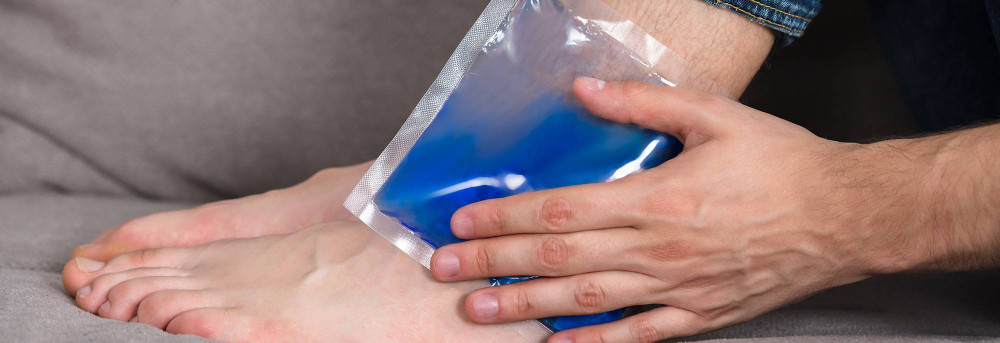
How PEA Helps Relieve Neuropathic & Chronic Pain
How is PEA used to treat pain?
How is PEA used to treat pain?
How is PEA used to treat pain?
How is PEA used to treat pain?
- Endogenous Production: PEA is produced in the body on demand as a protective response to injury, inflammation, and pain. It is synthesized and metabolized by mast cells and microglia.
- Multiple Targets: PEA exerts its effects through interactions with several receptors and pathways, including:
- PPAR-α Agonist: PEA acts as an agonist or activator of Peroxisome Proliferator Activated Receptors (PPAR), particularly PPAR-α, which is a nuclear receptor that regulates genes involved in pain and inflammation. Activation of PPAR-α is a key mechanism for pain relief.
- Cannabinoid Receptors: PEA interacts with cannabinoid receptors, including CB1 and CB2, indirectly modulating their activity and contributing to pain relief.
- Other Receptors: PEA also interacts with other receptors such as GPR55 and TRPV1.
- Anti-inflammatory Effects: PEA reduces inflammation by suppressing the release of inflammatory mediators, inhibiting mast cell activation and downregulating pro-inflammatory enzymes. It can modulate the synthesis of pro-inflammatory cytokines and chemokines.
- Neuroprotective Actions: PEA has demonstrated neuroprotective properties, including the ability to modulate mechanisms involved in neurodegenerative processes.
Clinical Applications for Pain Management:
Clinical Applications for Pain Management:
- Neuropathic Pain:
- PEA is effective in treating both peripheral and central neuropathic pain. It can reduce neuroinflammation and central sensitization in chronic neuropathic pain.
- It has shown promise in various conditions such as diabetic neuropathy, post-herpetic neuralgia, chemotherapy-induced neuropathic pain, and pain associated with multiple sclerosis.
- PEA can modulate glial cells, mast cells, and neurons to reduce pain.
- Pain Associated with Diabetes:
PEA has been shown to alleviate pain and improve nerve function in patients with diabetic neuropathy.
It may also improve insulin levels and preserve Langerhans islet morphology in type 1 diabetes.
- Other Pain Conditions:
- PEA has been used for various pain conditions, including osteoarthritis, joint pain, fibromyalgia, endometriosis, post-operative pain, and migraine.
- It has also shown effectiveness for pain associated with conditions such as carpal tunnel syndrome, low back pain, and sciatica.
- Synergistic Effects: PEA can enhance the analgesic effects of other compounds, such as pregabalin, amitriptyline, opioids, and tramadol.
- Combination Therapy: PEA can be combined with standard analgesic medications to achieve better pain control.
Forms of PEA and Administration:
Forms of PEA and Administration:
- Oral Administration: PEA is commonly administered orally, often in doses ranging from 100mg to 1200mg per day. Some studies have used dosages of 600mg twice daily for a few weeks then reduced to 600mg once daily. Dosages can vary depending on the condition and individual response.
- Topical Application: PEA has also been used topically to treat conditions like postherpetic neuralgia and atopic dermatitis.
Safety and Tolerability:
Safety and Tolerability:
- High Safety Profile: PEA is considered safe and well-tolerated, with very few side effects reported.
Lack of Toxicity: PEA lacks acute and chronic toxicity and is not associated with gastric mucosal lesions.
- No Drug Interactions: PEA can be combined with other medications without significant drug-drug interactions.
Additional Notes:
Additional Notes:
Chronic Pain Management: PEA addresses the underlying mechanisms of chronic pain, including neuroinflammation, glial cell activation, and mast cell activation.
"Entourage" Effect: PEA may act as an "entourage" compound by preventing the breakdown of anandamide, an endogenous cannabinoid.
- Food for Special Medical Purposes (FSMP): PEA is considered a food for special medical purposes in some regions.
In summary, PEA is a promising therapeutic agent for the management of various pain conditions, particularly neuropathic pain and pain associated with diabetes, due to its anti-inflammatory, analgesic, and neuroprotective properties, as well as its high safety and tolerability.
PEA (Palmitoylethanolamide): Pain Relief Without NSAIDS
ABOUT THE AUTHOR
Dr. Meredith Warner is the creator of Well Theory and The Healing Sole. She is a board-certified Orthopedic Surgeon and Air Force Veteran.
She is on a mission to disrupt traditional medicine practices and promote betterment physically, spiritually and mentally to many more people. She advocates for wellness and functional health over big pharma so more people can age vibrantly with more function and less pain.
At Well Theory, Our surgeon-designed products are FDA Registered and formulated to help people:
- Manage the symptoms of musculoskeletal pain
- Recover vibrantly from orthopedic related surgeries
- Fill the gaps in our daily diets
- Manage pain associated with inflammation




